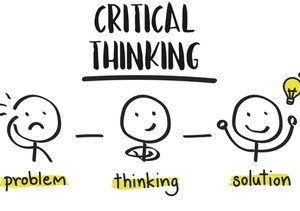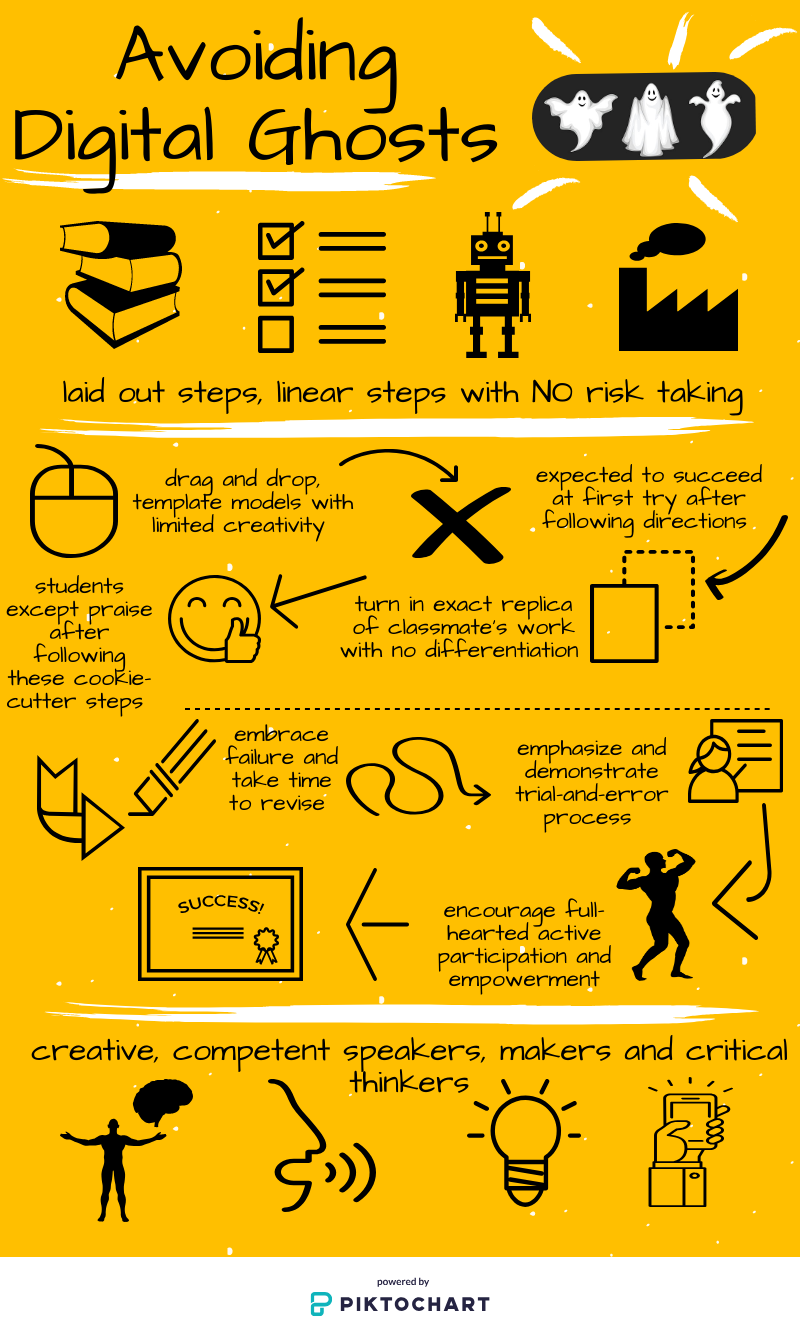I had the opportunity to read the following compelling article that was written by Ashley Hinck, on how to avoid digital ghosts in the modern classroom.
Now after reading the article and if we’re being completely honest… When I first entered this class, I felt exactly the same way as many of students did entering Hinck’s class; hoping to learn about the basics of technology so I could implement it in the classroom one day. However, with further exploration of the article, I, along with the aforementioned students, came to understand that the way we have understood, explored technology and attempted to become the digital pedagogues that Hinck talks about, is obviously lacking. Hinck explains that the way students have become accustomed to technology relates to the banking model of education. Students are considered blank slates that the education system needs to fill with standardized tests and textbook reading, all while creating educational robots.
 This expands upon the way that students use technology; they stick to what they know, limit themselves creatively with the shortcut/template options and hope and pray they followed the right steps to avoid failure. Yes, it is possible to have some imagination when it comes to these predetermined templates, but students still have to ensure that their creativity fits. It is unfortunate that these applications and technologies are programmed this way because it limits innovation, creativity and openness for students. Hinck concludes with ways in which we as educators can make the transition from the step-by-step linear instruction to a more open-ended, discovery-based way to implement technology in the classroom, and ultimately learning in general. If we give students the opportunity to try, fail, revise and succeed, students will be better equipped to become makers, creators and critical thinkers.
This expands upon the way that students use technology; they stick to what they know, limit themselves creatively with the shortcut/template options and hope and pray they followed the right steps to avoid failure. Yes, it is possible to have some imagination when it comes to these predetermined templates, but students still have to ensure that their creativity fits. It is unfortunate that these applications and technologies are programmed this way because it limits innovation, creativity and openness for students. Hinck concludes with ways in which we as educators can make the transition from the step-by-step linear instruction to a more open-ended, discovery-based way to implement technology in the classroom, and ultimately learning in general. If we give students the opportunity to try, fail, revise and succeed, students will be better equipped to become makers, creators and critical thinkers.


As you can tell from my infographic below, I have chosen to create a poster that highlights the different views that Hinck expressed in her article. Like I previously mentioned, the beginning of the article describes a more standardized form of education whereas the end it transitions towards authentic education and I found this infograph to be extremely helpful in getting my points across about these issues. I can conclude that I have definitely learned that the best way to shape critical thinkers, creators and makers, is to implement more discovery-based technology and let students try and succeed on their own.
-Leslie Webber

